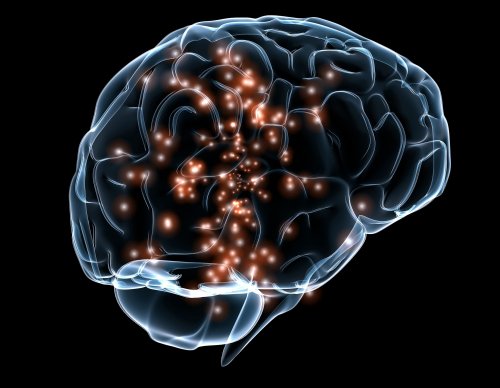Engrams: Traces of Experience in Our Brain


Written and verified by the psychologist Valeria Sabater
When we talk about engrams, we refer to the traces experience leaves in our brains. Hinduism already defined the process through which small neuronal structures are formed after a determined sensation, a shocking event, or an unforgettable emotion. They talked about “samskaras”, imprints of a memory to learn from.
Even though no one doubts the existence of engrams nowadays, the mechanism by which those brain imprints come to form is still a mystery. However, we do know that when we go through a highly emotional experience, we immediately produce a stable neuronal interconnection structure that will later influence our whole mental functioning: thoughts, emotions, and behavior. Fascinating, isn’t it?
Now, the way this “neuronal trace” will determine our behavior is unpredictable. Given this subtle action mechanism, some people see engrams as brain “chips”. They see them as records inside our “hard drive” that push us to act a certain way.
Some of them might actually articulate our fears, making us react a specific way towards certain stimuli (based on engrams formed during childhood). This is an interesting topic worth studying.

Engrams or traces of our experiences
We briefly touched on the term “samskara”. In a philosophical context, Hindus coined a new word to represent this common phenomenon. Let’s think about how, sometimes, we don’t know why we act a certain way during particular events. This spiritual current interprets “samskaras” as the codes of “karma“. Also, as imprints of a memory, integrated into both our minds and our bodies.
It’s actually curious how, in different scientific disciplines such as neuroscience, this idea has an almost parallel story. Let’s see an example of this. Ana is 5 years old and she’s learning to ride a bike. Suddenly, a big dog jumps on her and bites her. Now, 20 years later, Ana’s still reluctant to ride her bike. She’s not afraid of dogs, but her brain created an engram where the act of pedaling and pain are related.
Scientists explain how engrams are evident proof of how classical conditioning registers in our brain. This explains why we sometimes react a certain way in front of seemingly “neutral” stimuli. Now, an activation of the limbic system is necessary for an engram to be formed in our brain. We need to experience a particular, revealing, and intense emotion (either positive or negative).

Engrams and our mental universe
Engrams form a great part of our mental and psychological universe. When we see a rose, for example, it’s delightful for us because, in some way, we anticipate its smell. When we drink a cup of hot cocoa, we might remember our childhood. Whenever we listen to new music, we feel satisfaction, joy, and pleasure.
Engrams form our conscience as a neuronal system that expands as we experience new things. They’re like anchors, tracing everything we are and everything that gets a reaction out of us. It’s organic and electrical matter organized according to our interactions. However, finding out how this whole “physical-chemical-neural” tangle is produced has been challenging for neurologists. They also study the synaptic ways through which they develop and the kind of neurons that form an engram.
For scientists, it’s fascinating to think there’s a specific type of nerve cells for this function. They are, so to speak, organic structures whose function is to be a part of our conscious, form our psyche, and organize themselves into “micro-chips” of memory that hold traces of who we are.

Neurologists such as Michele Pignatelli, Tomás J. Ryan, and Susumu Tonegawa carried out recent studies that revealed important information. They discovered that our brain is already genetically arranged to activate engrams only a few seconds after being born. It’s as if we all carried a completely new computer inside of us, that, once it turns on, it starts installing its own software.
Now, there’s a requirement for this programming to be optimal and resistant, but also agile and effective. It’s necessary for our first experiences (childhood) to be stimulating and positive enough. That way, our first engrams will be foundations full of energy, imprints packed with motivational memories and learnings that will lead to a healthy development.
When we talk about engrams, we refer to the traces experience leaves in our brains. Hinduism already defined the process through which small neuronal structures are formed after a determined sensation, a shocking event, or an unforgettable emotion. They talked about “samskaras”, imprints of a memory to learn from.
Even though no one doubts the existence of engrams nowadays, the mechanism by which those brain imprints come to form is still a mystery. However, we do know that when we go through a highly emotional experience, we immediately produce a stable neuronal interconnection structure that will later influence our whole mental functioning: thoughts, emotions, and behavior. Fascinating, isn’t it?
Now, the way this “neuronal trace” will determine our behavior is unpredictable. Given this subtle action mechanism, some people see engrams as brain “chips”. They see them as records inside our “hard drive” that push us to act a certain way.
Some of them might actually articulate our fears, making us react a specific way towards certain stimuli (based on engrams formed during childhood). This is an interesting topic worth studying.

Engrams or traces of our experiences
We briefly touched on the term “samskara”. In a philosophical context, Hindus coined a new word to represent this common phenomenon. Let’s think about how, sometimes, we don’t know why we act a certain way during particular events. This spiritual current interprets “samskaras” as the codes of “karma“. Also, as imprints of a memory, integrated into both our minds and our bodies.
It’s actually curious how, in different scientific disciplines such as neuroscience, this idea has an almost parallel story. Let’s see an example of this. Ana is 5 years old and she’s learning to ride a bike. Suddenly, a big dog jumps on her and bites her. Now, 20 years later, Ana’s still reluctant to ride her bike. She’s not afraid of dogs, but her brain created an engram where the act of pedaling and pain are related.
Scientists explain how engrams are evident proof of how classical conditioning registers in our brain. This explains why we sometimes react a certain way in front of seemingly “neutral” stimuli. Now, an activation of the limbic system is necessary for an engram to be formed in our brain. We need to experience a particular, revealing, and intense emotion (either positive or negative).

Engrams and our mental universe
Engrams form a great part of our mental and psychological universe. When we see a rose, for example, it’s delightful for us because, in some way, we anticipate its smell. When we drink a cup of hot cocoa, we might remember our childhood. Whenever we listen to new music, we feel satisfaction, joy, and pleasure.
Engrams form our conscience as a neuronal system that expands as we experience new things. They’re like anchors, tracing everything we are and everything that gets a reaction out of us. It’s organic and electrical matter organized according to our interactions. However, finding out how this whole “physical-chemical-neural” tangle is produced has been challenging for neurologists. They also study the synaptic ways through which they develop and the kind of neurons that form an engram.
For scientists, it’s fascinating to think there’s a specific type of nerve cells for this function. They are, so to speak, organic structures whose function is to be a part of our conscious, form our psyche, and organize themselves into “micro-chips” of memory that hold traces of who we are.

Neurologists such as Michele Pignatelli, Tomás J. Ryan, and Susumu Tonegawa carried out recent studies that revealed important information. They discovered that our brain is already genetically arranged to activate engrams only a few seconds after being born. It’s as if we all carried a completely new computer inside of us, that, once it turns on, it starts installing its own software.
Now, there’s a requirement for this programming to be optimal and resistant, but also agile and effective. It’s necessary for our first experiences (childhood) to be stimulating and positive enough. That way, our first engrams will be foundations full of energy, imprints packed with motivational memories and learnings that will lead to a healthy development.
This text is provided for informational purposes only and does not replace consultation with a professional. If in doubt, consult your specialist.







